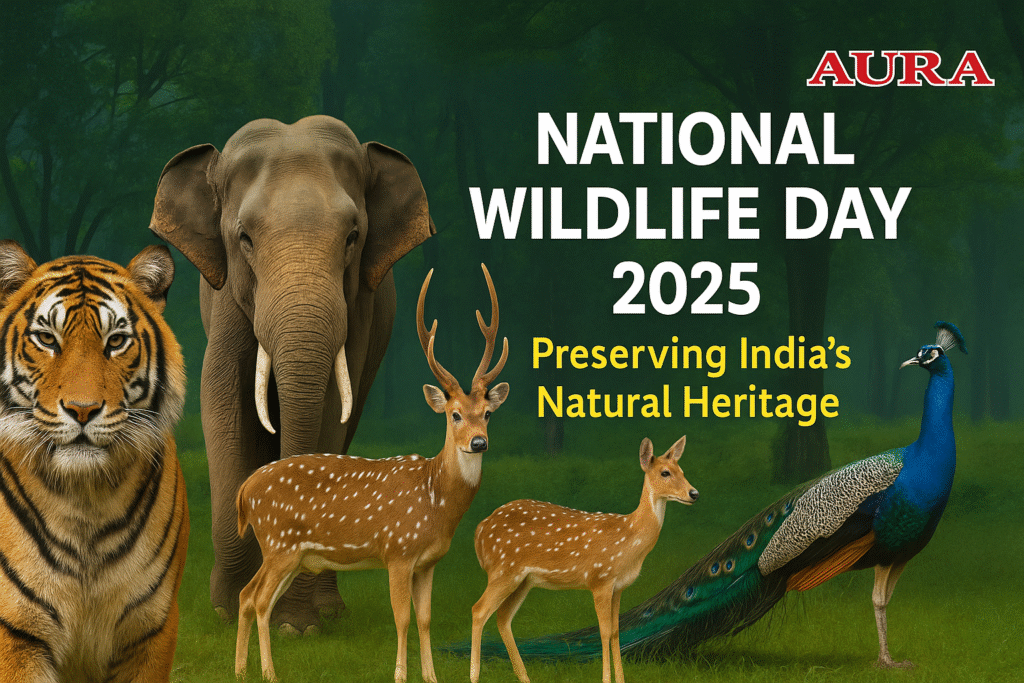🐅 National Wildlife Day 2025 – Preserving India’s Natural Heritage

Every year, National Wildlife Day is observed on 4th September to spread awareness about the importance of protecting the Earth’s diverse species and ecosystems. The day is a reminder that conservation is not just an environmental necessity—it is an ethical and developmental responsibility.
For UPSC aspirants, the topic holds great relevance under GS Paper 3 – Environment, Biodiversity & Conservation, as well as in Essay and Ethics Papers, where ecological sensitivity and sustainable governance are core themes.
Background
National Wildlife Day was established in memory of Steve Irwin, the Australian wildlife conservationist and environmentalist, popularly known as the “Crocodile Hunter.” The day aims to inspire individuals and institutions to take actionable steps toward protecting wildlife and their natural habitats.
In India, this observance aligns with the country’s constitutional and policy commitments to biodiversity conservation—notably under:
Article 48A – Protection and improvement of the environment and safeguarding of forests and wildlife.
Article 51A(g) – Duty of every citizen to protect and improve the natural environment.
Theme for National Wildlife Day 2025
The global theme for 2025 is “Sustaining Life on Earth: Restoring Habitats, Protecting Species.”
This year’s theme emphasizes that ecosystem restoration is the foundation for sustainable development—ensuring food security, climate stability, and human well-being.
India’s Efforts in Wildlife Conservation
India, home to nearly 8% of the world’s biodiversity, has been at the forefront of wildlife protection through various programs and legislation.
Key Initiatives:
🟢 Wildlife Protection Act, 1972 – Legal framework for protecting species and habitats.
🟢 Project Tiger (1973) – Conservation of tigers and their ecosystems.
🟢 Project Elephant (1992) – Protection of elephant corridors and habitats.
🟢 Integrated Development of Wildlife Habitats (2008) – Focus on lesser-known species and landscape-level conservation.
🟢 CAMPA Funds – For afforestation and compensatory environmental measures.
Challenges in Wildlife Conservation
Despite progress, India’s wildlife faces multiple threats:
⚠️ Habitat fragmentation due to urbanization and deforestation.
⚠️ Poaching and illegal wildlife trade.
⚠️ Human–wildlife conflict in buffer zones.
⚠️ Climate change affecting migration and breeding patterns.
Way Forward
To ensure ecological balance and sustainable coexistence, India must:
🌿 Strengthen community-based conservation models like Eco-Development Committees (EDCs).
🌿 Integrate technology (drones, camera traps, GIS mapping) in monitoring wildlife corridors.
🌿 Enhance eco-literacy among citizens and local bodies.
🌿 Foster international cooperation under platforms like the Convention on Biological Diversity (CBD) and CITES.
UPSC Relevance
For UPSC aspirants, Wildlife Conservation connects with multiple syllabus areas:
GS Paper 3: Environment, Biodiversity, Climate Change.
GS Paper 4: Ethics – Duty towards environment and intergenerational equity.
Essay Paper: Sustainable Development, Human–Nature Relationship.
💡 Example Question:
“India’s commitment to wildlife conservation is a constitutional as well as moral duty. Discuss in the context of recent government initiatives.”
Conclusion
National Wildlife Day 2025 reminds us that saving wildlife is synonymous with saving ourselves. India’s cultural ethos of Vasudhaiva Kutumbakam—“the world is one family”—extends beyond humans to every living being on this planet.
Conservation is not a one-day affair but a continuous process that shapes a sustainable and ethical civilization.
🛒 For UPSC Students – Recommended Reading
📘 Aura IAS Environment & Ecology PYQs (2013–2025) – with model answers and case studies for GS Paper 3.
🔗 https://auraias.in/shop/



